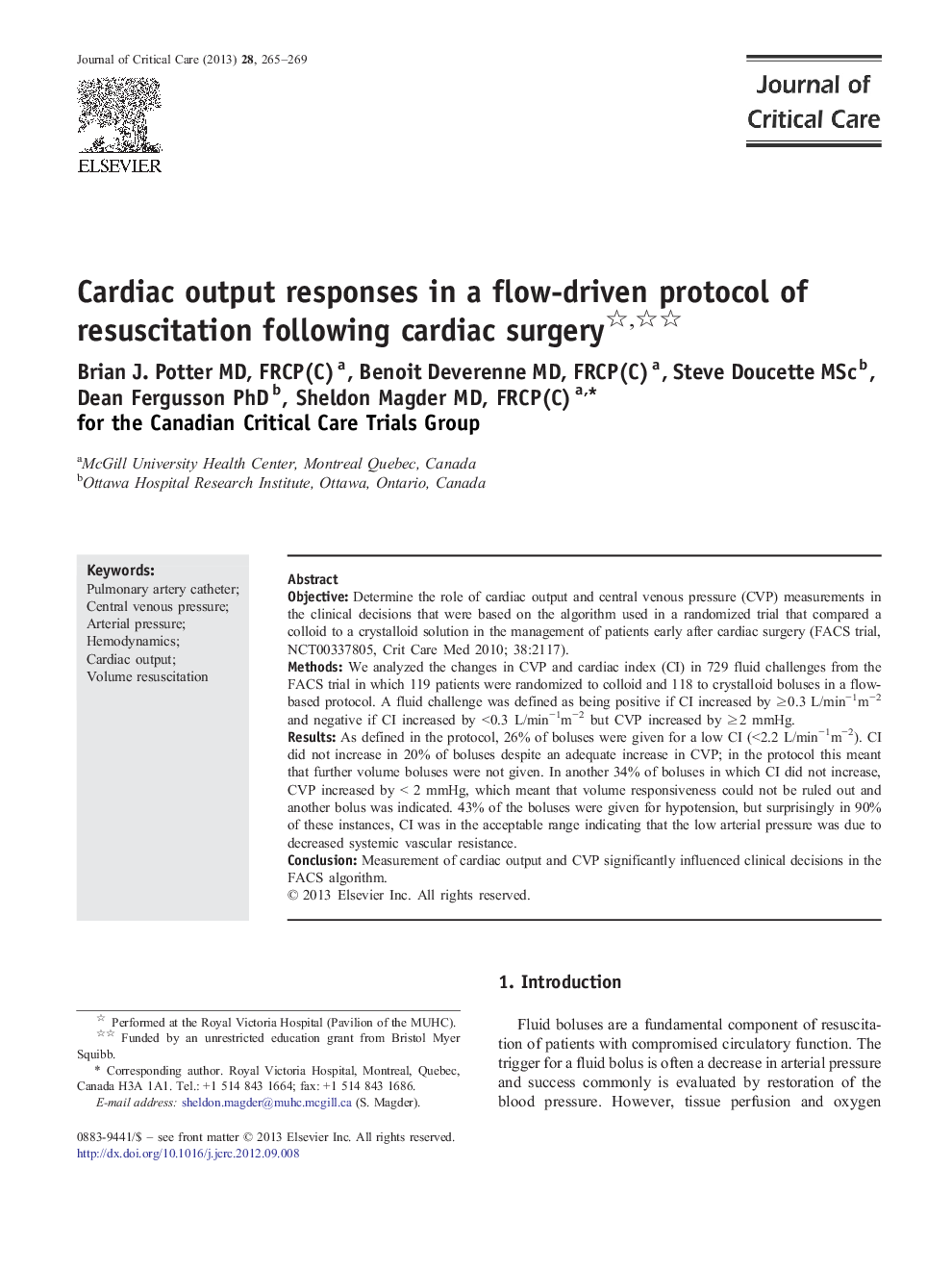| Article ID | Journal | Published Year | Pages | File Type |
|---|---|---|---|---|
| 2765106 | Journal of Critical Care | 2013 | 5 Pages |
ObjectiveDetermine the role of cardiac output and central venous pressure (CVP) measurements in the clinical decisions that were based on the algorithm used in a randomized trial that compared a colloid to a crystalloid solution in the management of patients early after cardiac surgery (FACS trial, NCT00337805, Crit Care Med 2010; 38:2117).MethodsWe analyzed the changes in CVP and cardiac index (CI) in 729 fluid challenges from the FACS trial in which 119 patients were randomized to colloid and 118 to crystalloid boluses in a flow-based protocol. A fluid challenge was defined as being positive if CI increased by ≥ 0.3 L/min− 1m− 2 and negative if CI increased by < 0.3 L/min− 1m− 2 but CVP increased by ≥ 2 mmHg.ResultsAs defined in the protocol, 26% of boluses were given for a low CI (< 2.2 L/min− 1m− 2). CI did not increase in 20% of boluses despite an adequate increase in CVP; in the protocol this meant that further volume boluses were not given. In another 34% of boluses in which CI did not increase, CVP increased by < 2 mmHg, which meant that volume responsiveness could not be ruled out and another bolus was indicated. 43% of the boluses were given for hypotension, but surprisingly in 90% of these instances, CI was in the acceptable range indicating that the low arterial pressure was due to decreased systemic vascular resistance.ConclusionMeasurement of cardiac output and CVP significantly influenced clinical decisions in the FACS algorithm.
